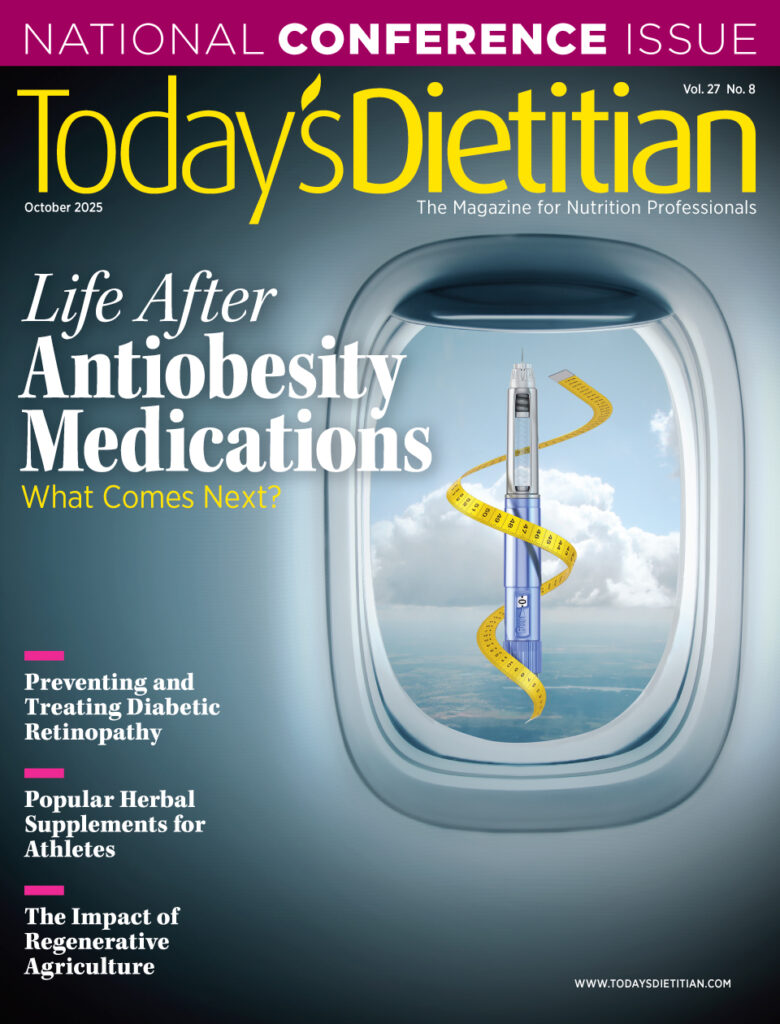Today’s Dietitian
Vol. 17 No. 8 P. 5
A few months ago, I had a nightmare that a swarm of bees were in my living room and emerging from the floor in my powder room. Some flew toward me, and I frantically swatted them away. While they didn’t sting me, I remember feeling terrified. My fear of bees began in my childhood, during which I experienced painful bee stings on more than a few occasions. Fast forward to my adulthood: If a bee flies in my direction, I’ll literally run the other way.
While many people fear bee stings because of the intense pain and/or the allergic reaction to the venom that accompanies a sting, without bees we wouldn’t have honey and flowers wouldn’t get pollinated. But bees bring much more than honey to our kitchen tables and gorgeous foliage to our flowerbeds. Bees are responsible for producing several commercial crops in North America and contribute to global food production. They pollinate several varieties of fruits and vegetables as well as seeds and nuts—contributing billions of dollars to the US economy. So we can’t do without them.
But for the past 10 years, bee populations have been on the decline, posing a threat to global agriculture. The losses have been so pronounced that the trend simply isn’t sustainable. Experts believe that lack of habitat as well as parasites, viruses, and pesticides are the roots of the problem. As a result, the United States and international governments are doing everything they can to address these issues to restore bee health and boost populations.
Dietitians who are passionate about environmental and sustainability issues can help in this effort by getting involved with nonprofit organizations that promote school gardens, working with farmers’ markets and local beekeepers to improve bee health, and participating in farm-to-school programs that contribute to the health of bees and other pollinators. To learn more about the bee population decline, what’s being done about it, and how you can get involved, read “Protecting Bee Populations,” on page 46.
Also in this issue are articles on individualized diabetes nutrition, processed foods, combatting childhood hunger, and the top 10 high-fiber foods.
Let us know what you think about these and other articles on our Facebook and Twitter pages, and please enjoy the rest of the issue!
Judith Riddle
Editor
TDeditor@gvpub.com


